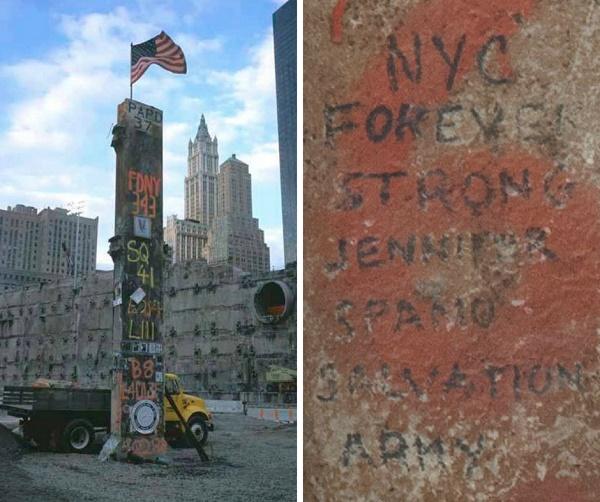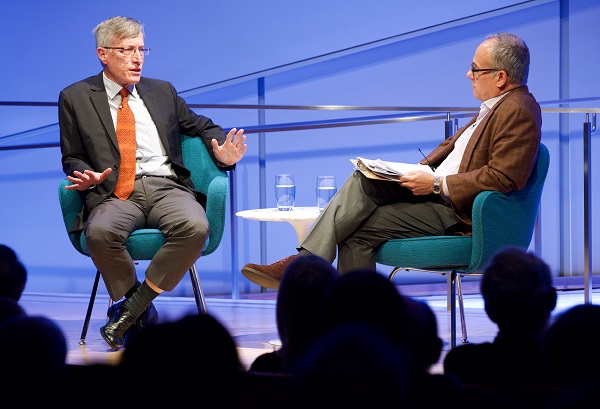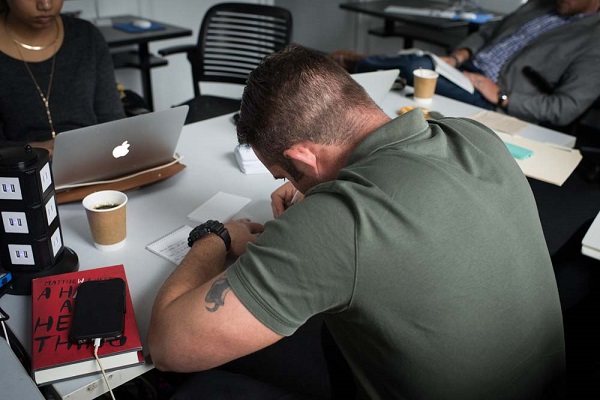Make a donation to the museum
Interpreting the Last Column: NYC Forever Strong Marking
Interpreting the Last Column: NYC Forever Strong Marking

Interpreting the Last Column: In this series, 9/11 Memorial & Museum exhibitions staff share the stories behind the markings and tributes placed on the Last Column. The Last Column was the final piece of steel to be removed from the World Trade Center site marking the completion of the nine-month recovery period. A symbol of resilience and marker of loss, it now stands in the Museum’s Foundation Hall bearing its memorial tributes. If you signed or left a tribute on the column and would like to share your story, please write to exhadmin@911memorial.org.
Two days following the 9/11 attacks, Jennifer Spano began volunteering for the Salvation Army, a religious organization that serves people and communities in need. She worked at their New York headquarters on 14th Street, loading and unloading trucks and organizing supplies for the rescue and recovery efforts. That night she traveled to Ground Zero to continue her volunteer work. The Salvation Army soon hired Spano to work for the duration of the nine-month recovery period. She signed the Last Column with “NYC forever strong” on May 28, 2002, shortly before the Last Column’s cut-down ceremony.
On 9/11, the Salvation Army responded to the World Trade Center within a half hour of the North Tower attack. In the ensuing months, Salvation Army officers, employees and volunteers from across North America deployed to Ground Zero to help. By the recovery period’s end, 39,000 members had provided aid to rescue, recovery and relief workers, as well as to victims’ relatives.
The work of the Salvation Army included offering water and meals via mobile canteens, supplies such as work boots and gas masks, grief counseling and spiritual support. In December 2001, the organization took full responsibility for feeding workers at Ground Zero. After the recovery period formally ended, the Salvation Army continued to offer care to those who had lost family, homes or jobs in the attacks.
The Salvation Army provided similar relief services at the Pentagon, Flight 93 crash site and Fresh Kills Landfill.
By Emily Edwards, Collections and Exhibitions Coordinator, and Katherine Fleming, Exhibition Coordinator, 9/11 Memorial Museum
Previous Post
Exploring “What Russia Wants” at the 9/11 Memorial Museum

Stephen Sestanovich, a senior fellow at the Council on Foreign Relations, spoke at the 9/11 Memorial Museum on Wednesday night about Russia and its impact on America, Europe and the Middle East in the years following 9/11.
Next Post
Service Members and Writing Fellows from The War Horse Reflect on Visit to the 9/11 Memorial & Museum

Everyone who was alive that day, and many who were not yet born, has a story to tell about September 11. The War Horse is creating a home for these personal stories.